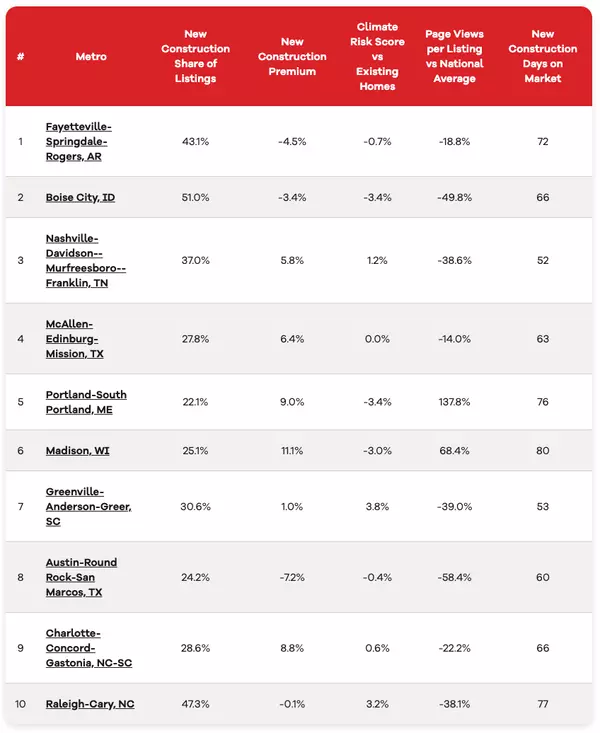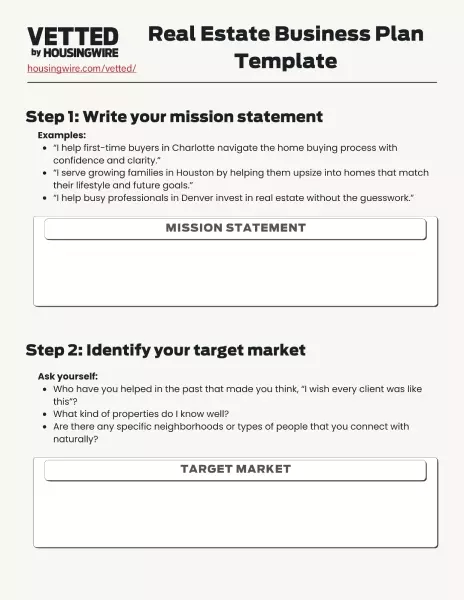How to guide real estate buyers through mortgage rate changes
Mortgage rates are a crucial factor in any real estate purchase, particularly given the significant rise in rates over the past few years. With the Fed meeting coming up in September, there is anticipation that they will drop, but rates are constantly shifting, presenting some potential difficulties for clients shopping near the top end of their budget.
Mortgage rates that rise higher than expected before financing is secured can deal a serious blow to a home’s affordability or a client’s chances of loan approval. Regardless of where rates head, your role as a real estate agent is to remain calm, informed, and proactive. Here’s a practical guide to help you support your clients when mortgage rates shift higher or lower before closing.
1. Prepare clients ahead of time
Many factors influence changing interest rates, and these days, it’s challenging to predict where the lending landscape will go.
Prepare clients early in the homebuying process by explaining the possibility of a rate change, and its potential impact on them. Buyers often feel somewhat out of their depth when it comes to financing, as evidenced by a new study by Clever Real Estate, which found that 85% of boomers and Gen Xers, and 86% of millennials, believe mortgage lenders should provide more financial education for buyers. As their closest partner in the transaction, they’ll also likely turn to you for advice and support.
2. Remain calm
If you have readied your clients for the possibility of a change in interest rates before closing, don’t ruin your good work by getting anxious or conveying any nerves or uncertainty to them when it happens. Buying a home can be an emotional process, and you can provide your clients with reassurance and steady guidance to help them navigate it.
3. Encourage communication with lenders
First-time homebuyers, in particular, often seem intimidated by the entire lending and mortgage process. It makes sense, as many of the concepts behind borrowing money for a home are not part of a person’s day-to-day financial life.
If rates change before closing, encourage your client to contact their lender immediately to obtain an updated loan estimate, confirm whether they have a locked rate, and discuss new payment projections if they do not have one. Make sure they know which questions to ask, and follow up with clients after they’ve spoken to their lender.
4. Explain rate locks
Most lenders will explain the difference between a locked rate and a variable rate, but if your clients are still confused, help them understand the pros and cons of a locked rate. This can include the potential to miss out on savings if rates decrease instead. Make sure they also understand any timeline associated with a rate lock. While their rate will usually remain locked through the typical closing period, any delays in completing the transaction could put this at risk. In this case, it becomes essential to ensure that closing stays on track to access the locked rate.
5. Discuss the new monthly payment
If clients come away from their lender more confused than ever, sit down with them to discuss their new monthly payment and how a rate increase will affect them. A higher monthly mortgage payment is just one of the challenges a rate change can bring. It might also impact their ability to qualify for a loan due to an increased debt-to-income ratio. This is especially difficult with clients who are borrowing money at the upper limit of their qualification.
6. Check in with the budget
While 1% doesn’t seem like much, the result can be dramatic. Consider a $400,000 house with a 30-year mortgage and a 20% down payment. The difference between a 7% rate and a 6% one is around $210 per month, a significant sum for many households. Of course, if rates go down, money will be saved.
In some areas, first-time homebuyers may qualify for down payment assistance that can reduce the amount of money they borrow, lowering their monthly payment.
7. Have a backup plan
It’s essential to have a short list of trusted lenders and mortgage brokers. If clients struggle to afford their new payment based on a higher rate, having a backup lender offer a second opinion or new financing is a good strategy. If your client wants to stick with their original lender, consider whether extending the closing is a viable and cost-effective option that will keep the sale on track.
8. Keep an eye on the market
Real estate agents aren’t just responsible for showing a client a house and helping with some paperwork. There is a lot of encouragement and handholding required as you guide buyers through what is likely the largest purchase they will make in their lives. Because this decision has such a significant financial impact, it’s essential to help them stay informed about financial news and ensure they aren’t blindsided by any shifts in the market.
9. Educate, but call in experts
As a real estate agent, you are in the unique position of shepherding clients of all income levels through the entire home-buying process. If you have been in the business for a while, chances are good you’ve seen every kind of deal come together (or fall through).
However, as knowledgeable a guide as you can be, your client’s lenders will have specific information on their products and their process. Let lenders explain the complexities of rate changes. This does not mean that you cannot answer some of the questions your clients may have. But do not overstep and offer financial advice.
10. Document everything
Ensure that all communication, including any changes to the rate, rate lock confirmations, or amendments to closing timelines, is in writing. This protects everyone involved in the transaction and provides a clear reference in case any questions arise during the closing process.
Luke Babich is CEO of Clever Real Estate.
This column does not necessarily reflect the opinion of HousingWire’s editorial department and its owners.
To contact the editor responsible for this piece: [email protected]
Categories
Recent Posts











